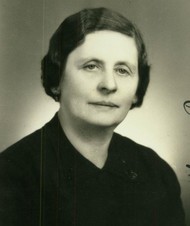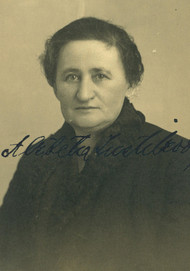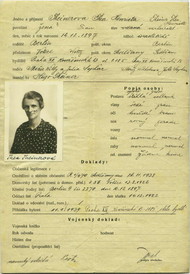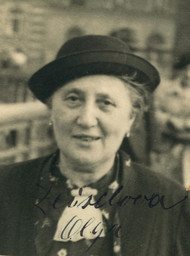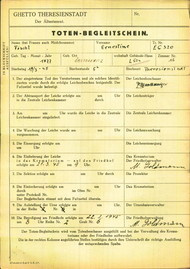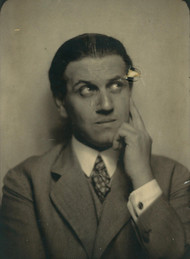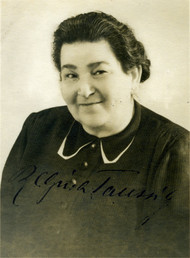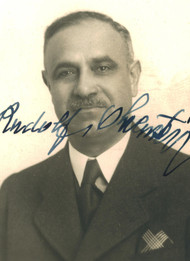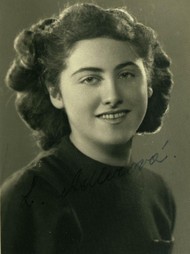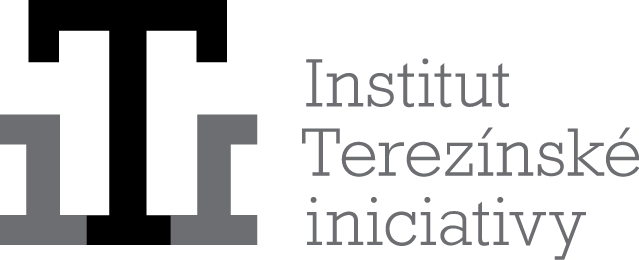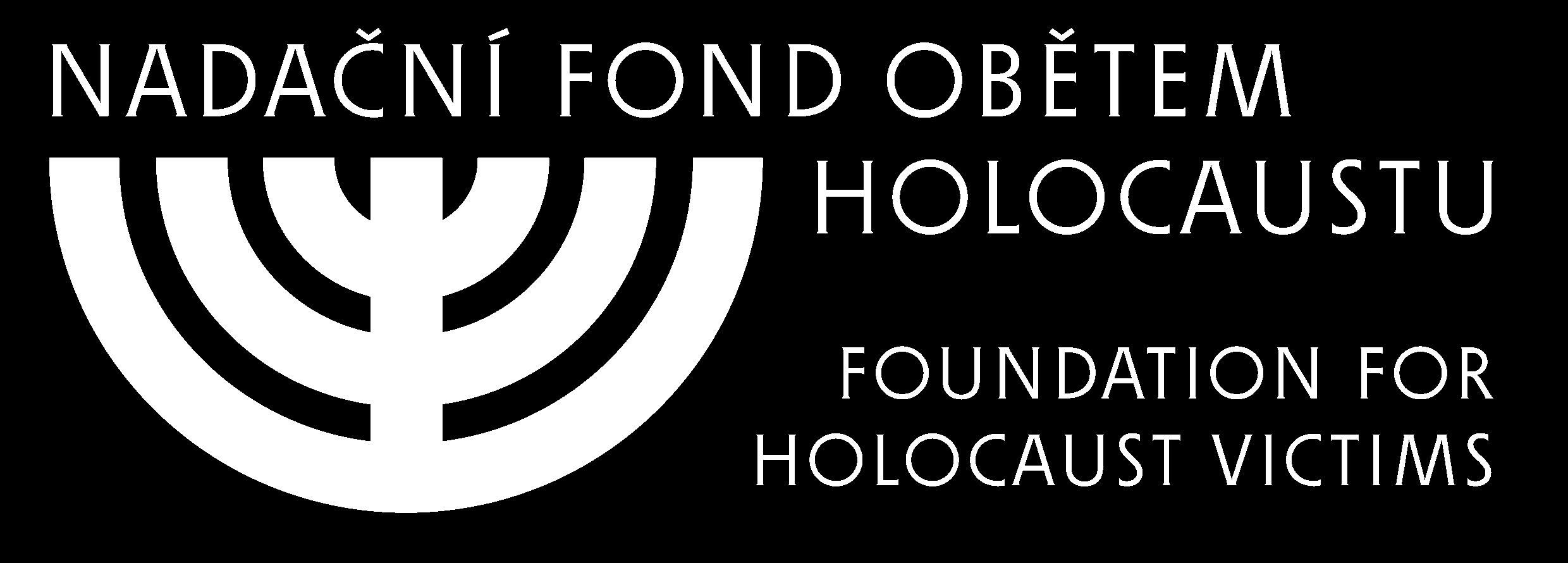Auschwitz was the Nazis' largest concentration and extermination camp. It was founded on Himmler's orders on the 27th of April 1940, close to the small Polish town of Oświęcim. The first inmates - mostly Polish political prisoners - were brought there in June 1940 and were used for slave labour. By March 1941, more than 10 000 prisoners were registered here. The Auschwitz camp was renowned for its harshness, with the most infamous being Block 11 (known as the bunker), where prisoners received the cruellest punishments. In front of it stood the black wall
, the site of frequent executions. The inscription Arbeit macht frei!
above the main gate of the original camp at Auschwitz was merely a cynical mockery.
A symbol of the ruthless abuse of the prisoners were the medical experiments carried out on the prisoners by Nazi doctors such as the infamous Josef Mengele. These doctors
experimented with the sterilisation of Jewish women, for example, and also performed experiments on children, especially twins.
In March 1941, Himmler ordered a second, larger complex to be built next to the original camp. It was called Auschwitz II - Birkenau. The camp at Birkenau was divided into subsections surrounded by electric fences with barbed wire. During 1943 and 1944 the BIIb section became the location of the Terezín family camp
. At its summit, Birkenau had over 100 000 inmates. In March 1942, the Auschwitz III camp was set up at nearby Monowitz, also known as Buna Monowitz. German company I.G. Farben set up a synthetic rubber factory there, in which it used the prisoners' slave labour. Auschwitz also had a further 45 auxiliary camps, where prisoners were forced to engage in slave labour, mostly for German companies.
Auschwitz became one of the camps used for the mass extermination of Jews. In summer 1941, Heinrich Himmler gave orders to Auschwitz commander Rudolf Höß to build a centre at Auschwitz for the mass murder of Jews. In September 1941, the lethal effects of Zyklon B - a substance normally used for pest control - were first tested and verified there. Later, four large gas chambers were built at Birkenau, capable of killing up to six thousand people each day. The gas chambers were disguised as showers, meant to persuade the victims that these were disinfection measures which they had to undergo before they were sent to work in the camp.
From the end of March 1942, Jewish transports from Nazi-ruled countries flowed into Auschwitz. Jews from Slovakia and France were deported there first, followed by Dutch Jews from July 1942, and from August, Jews from Belgium and Yugoslavia. Between October 1942 and October 1944, over 46 000 prisoners were deported from Terezín to Auschwitz. Some of them were put in the Terezín family camp
for a temporary period. Throughout 1943, transports were sent to Auschwitz from Germany and other countries in the Nazi sphere of power. The victims of the last great wave of deportations to Auschwitz were the Jews of Hungary, who were deported between May and July 1944.
On the basis of an order signed by Himmler on the 29th of January 1943, approximately 20 000 Roma were also deported to Auschwitz. The majority of them died in the gas chambers.
After the arrival of a transport at the ramp in Birkenau, the process known as selection took place. SS officers decided who would be taken to work, and who would be sent directly to the gas chambers. Often it was mere chance or the mood of the SS officer that decided whether someone died immediately or had a hope of survival. The prisoners selected for slave labour were sent to one of the many auxiliary camps at Auschwitz or elsewhere in the Nazi concentration camp system. Their aim was Vernichtung durch Arbeit
- extermination through labour.
The prisoners put up various forms of resistance to the tyranny of the camp. Resistance organisations helped inmates to obtain medicine and food, documented Nazi crimes, supported attempts to escape and sabotage, tried to put political prisoners into positions of responsibility, and prepared for an uprising. A total of 667 prisoners escaped from Auschwitz, but 270 of them were caught in the vicinity of the camp and immediately executed. The best-known escape was that of two Slovak Jews, Alfred Wetzler and Walter Rosenberg (Rudolf Vrba) (link in Czech). They managed to cross into Slovakia and to tell Jewish leaders - and through them the world - about the terrible reality of Auschwitz, about which they wrote an extensive report. On the 7th of October 1944, there was an uprising by the Sonderkommando working in the gas chambers. The prisoners managed to destroy one of the gas chambers, and thus to hinder the extermination process. All the rebels died. A group of young female prisoners was also executed for having smuggled gunpowder to the rebels from the factory in Monowitz.
Soon afterwards, the gas chambers and crematoria were destroyed on Himmler's orders, since the regime wanted to hide the traces of its murdering machine ahead of the advancing Red Army. As Soviet troops came near to the camp in January 1945, it was hurriedly evacuated and 58 000 prisoners were driven out on a death march, during which most were killed. On the 27th of January 1945, the Red Army entered the camp (link in Czech). They found 7 650 exhausted and starving prisoners and a number of pieces of evidence of crimes that the Nazis had not had time to destroy. In the camp stores they found almost eight tonnes of human hair and over a million men's suits and women's dresses.
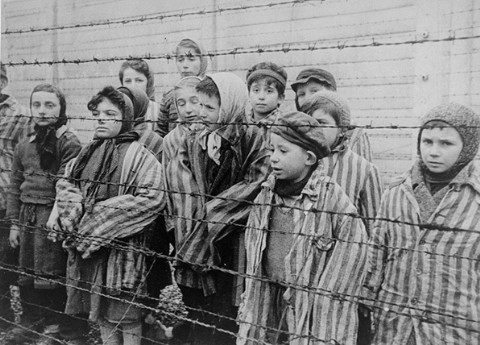
Photograph of child prisoners after the liberation of Auschwitz. (Photo: Belarussian State Archive of Documentary Film and Photography, courtesy of USHMM.)
According to various estimates, between 1.2 and 1.6 million people lost their lives in Auschwitz. Auschwitz became the symbol of the Nazis' final solution to the Jewish question
, a symbol of Nazi inhumanity and genocide.
After the war, many of those who had committed crimes at Auschwitz were put on trial in Poland and West Germany. In 1947, Auschwitz commander Rudolf Höß, was sentenced to death and executed. A further 22 Germans were sentenced in Frankfurt between 1963 and 1966 for crimes committed in Auschwitz.
-
See also:
-
The exhibition of the Czech Republic at Auschwitz (in Czech)
-
Testimony of Mrs. Věra L., born 1923 (in Czech)
-
Testimony of Mrs. Katarína G., born 1922 (in Czech)
-
Testimony of Mr. Artur R., born 1921 (in Czech)
-
Links:
-
Auschwitz-Birkenau Memorial Museum. The state museum at Auschwitz. General information about Auschwitz, history. Information about the museum's activities, bulletin. Description of museum displays. Published by the museum. Polish, English.
-
Map of Railroads Leading to Auschwitz. A map showing the railway lines that transported people to Auschwitz. (From A Teacher's Guide to the Holocaust.)
-
Literature:
-
Kraus, Ota a Schön, Erich. Továrna na smrt (Die Todesfabrik). Praha: Čin, 1946. 234 s.
-
Kulka, Erich. Soudcové, žalobci, obhájci. Proces s osvětimskými zločinci (Richter, Verhandlung, Verteidigung. Das Verfahren der Verbrecher von Auschwitz). Praha: Svoboda, 1966. 264 s.
-
Piper, Franciszek a Świebocka, Teresa. Auschwitz. Nazi Death Camp. Oświęcim: The Auschwitz-Birkenau State Museum, 1996. 343 s.
-
Vrba, Rudolf. Utekl jsem z Osvětimi (Ich entkam Auschwitz). Praha: Sefer, 1998. 438 s.
-
Brod, Toman, Kárná, Margita a Kárný, Miroslav. Terezínský rodinný tábor v Osvětimi-Birkenau (The Terezín Family Camp in Auschwitz-Birkenau). Praha: Terezínská iniciativa - Melantrich, 1994. 208 s.
-
Czech, Danuta. Kalendarium der Ereignisse im Konzentrationslager Auschwitz-Birkenau 1939-1945. Reinbek: Rowohlt, 1989. 1056 s.


